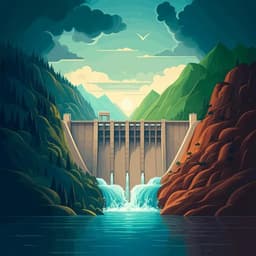
Earth Sciences
Understanding and managing new risks on the Nile with the Grand Ethiopian Renaissance Dam
K. G. Wheeler, M. Jeuland, et al.
Explore the intricate dynamics of the Grand Ethiopian Renaissance Dam's impact on transboundary water management along the Nile River. This research, conducted by Kevin G. Wheeler, Marc Jeuland, Jim W. Hall, Edith Zagona, and Dale Whittington, reveals insights into the risks and opportunities for Egypt, Sudan, and Ethiopia during the dam's filling and drought periods.
~3 min • Beginner • English
Related Publications
Explore these studies to deepen your understanding of the subject.







